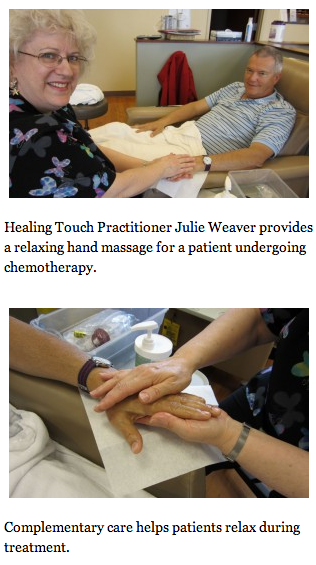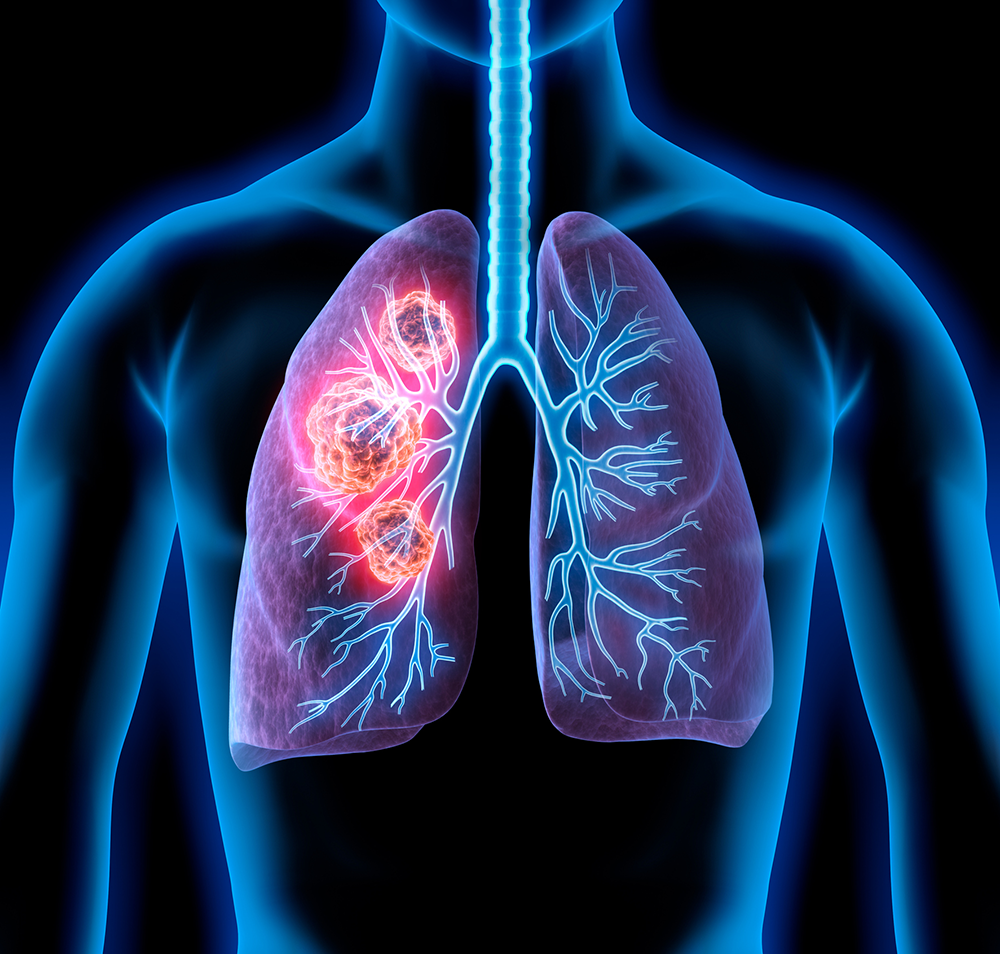 The blend of energy medicine and massage therapy can be one of the vital connections between patients and their chemotherapy or radiation treatments. Complementary care, defined as therapeutic disciplines that are used together with conventional medicine, frequently allows patients to experience reduced pain, stress, and even nausea. When the body can relax, side effects of chemotherapy such as headaches, peripheral neuropathy in hands and feet, bruising, and injection site pain are reduced, according to responses from our patients. The complementary care providers assist patients in “jump-starting” their natural, built-in ability to change how they feel.
The blend of energy medicine and massage therapy can be one of the vital connections between patients and their chemotherapy or radiation treatments. Complementary care, defined as therapeutic disciplines that are used together with conventional medicine, frequently allows patients to experience reduced pain, stress, and even nausea. When the body can relax, side effects of chemotherapy such as headaches, peripheral neuropathy in hands and feet, bruising, and injection site pain are reduced, according to responses from our patients. The complementary care providers assist patients in “jump-starting” their natural, built-in ability to change how they feel.
History of the Complementary Care Program
In 2010 a three-month pilot program of Healing Touch complementary care was implemented at Saint Paul Cancer Center by Julie Weaver, Healing Touch Practitioner who spent one afternoon each week in the chemotherapy bay offering this modality at no charge to patients who were interested. A pre and post-test based on self-report was conducted with each patient using the 1-10 scale to assess pain, nausea and anxiety. The final aggregate score showed an overall 58% reduction in these symptoms. The positive reception from patients led to expanding the program to additional clinics.
Since then, Weaver has formed a working relationship with Globe University’s Massage Therapy Program to offer a site for them to do their 45-hour senior internships on a volunteer basis. The program is now offered at our Edina Clinic and Maplewood Cancer Center.
Clear Benefits to Patients
Weaver continues to keep summary reports on the patients who have received complementary care. The patients’ individual assessments of their own pain, stress, and nausea are noted before complementary care is provided and the patient is asked to assess their pain, stress, and nausea before and after each session is completed. The quarterly reports continue to show self-assessed changes ranging from 48% to 59.6% less pain, stress, and nausea than before received complementary care.
Some comments from the patients after their session include “I can’t believe how relaxing this is. I feel great!” “My headache is gone.” “I feel like I could float away.”
2013 Oncology Massage Healing Summit
Weaver recently attended the 2013 Oncology Massage Healing Summit, held at Northwestern Health Sciences University in Bloomington, Minnesota. The three-day conference focused on oncology massage techniques and other modalities designed specifically to help massage therapists work effectively with clients who have cancer.
Megan Cole, award-winning actor of the Broadway stage and keynote speaker at the conference, Cole has performed at M.D. Anderson Cancer Center in Houston, and the Mayo Clinic Continuing Nursing Education Conference, teaching the art of compassion to medical students and providing techniques on how to regain it after burnout in the healing professions. Cole’s keynote address pointed out that massage therapists can be on the forefront of helping clients/patients release grief through oncology massage. All the fears of aloneness – the “anticipatory grief” – for what we’ve lost to cancer: independence, mobility, dignity are often the same things we feel if we live, and age, all alone.
Cole’s seminar session, “Hearing True Voices from the Healing Arts” discussed how to regain a sense of compassion when working in the healing professions, where burnout can be commonplace. She called all art – poetry, music, theater, and visual – the “healing arts” because through art, healthcare providers can experience a situation, a condition, a loss “at a distance”, where healthcare providers are not in front of their patients with physical and emotional needs. We can experience what others are going through, relate to it, and learn from it by seeing a play or reading poetry or viewing art, thereby regaining our compassion for others’ experiences. Cole says art “offers a direct road to the recovery of our compassion.”
Isabel Adkins, BA, CMT, CMLDT, developed and is the primary instructor for the 300-hour certification program in Oncology Massage – Blending East with West™ at the Massage Therapy Institute in Davis, CA. Her work includes integrating comfort-based massage with Eastern bodywork modalities to strengthen the body during cancer treatment, disease and its trauma. Adkins says Stress, chemotherapy, surgery, contemporary life itself – all stir up the “fight or flight” part of our brain, the part that has been with us since humans fought nature for survival.
This part of our brain works against Heart Chi, which simply wants all our organs to work well together, to be integrated in a whole being, helping us relate to others in our lives. Adkins says our contemporary culture is one of “spinning”, not allowing us to sit, to think, to be quiet. She says Heart Chi craves “devotion to the tasks at hand” and not to multi-tasking, as is prevalent in our culture.
A Way to Stop the Spinning
Even in a busy chemotherapy clinic, there is an oasis of quiet and relaxation, because our complementary care providers work one-on-one with patients, being open and attentive to just that person for the duration of their session together.
Weaver summarizes the complementary care program at Minnesota Oncology as a quiet, effective way to “stop the spinning” for a while. “Those of us who provide Energy Medicine or massage therapy help our patients toreconnect themselves,” she observes. “We are present just for them.”



